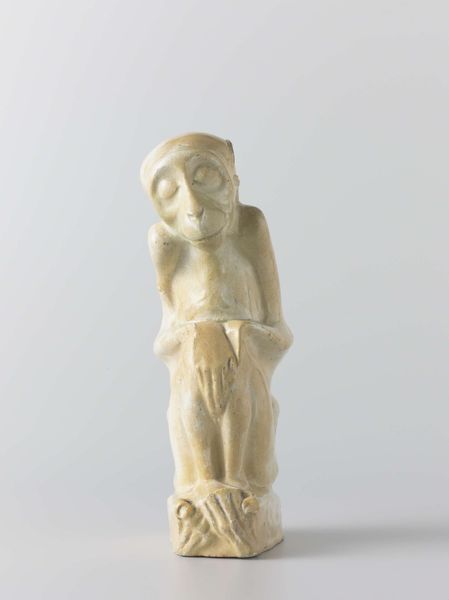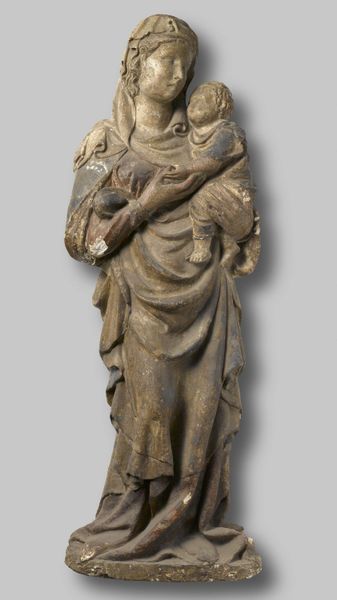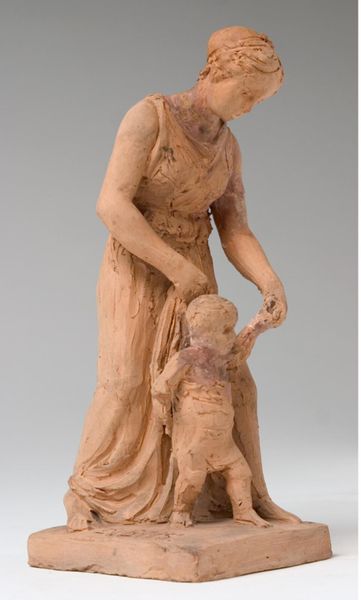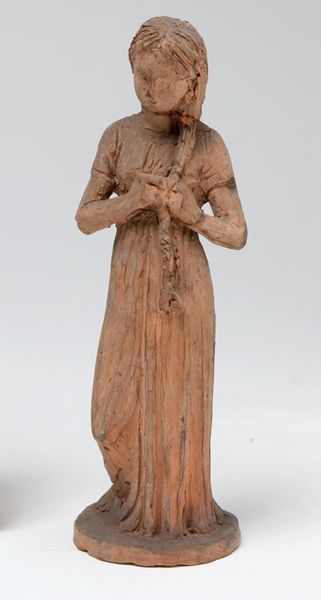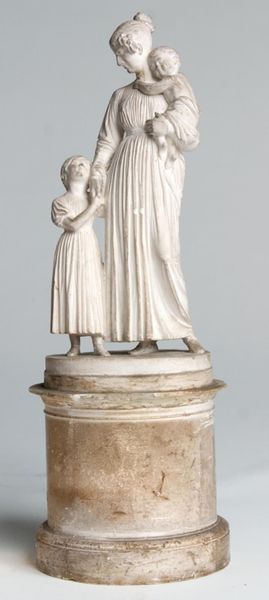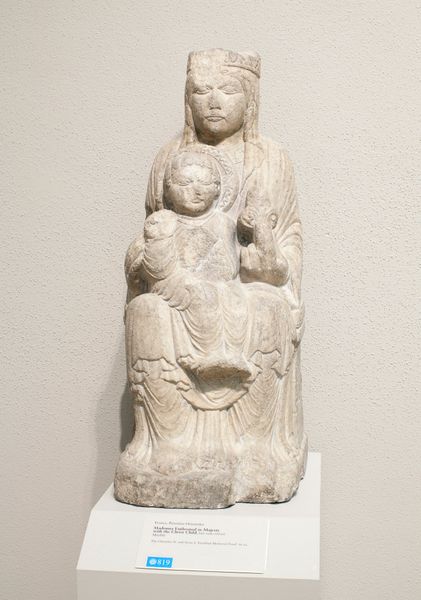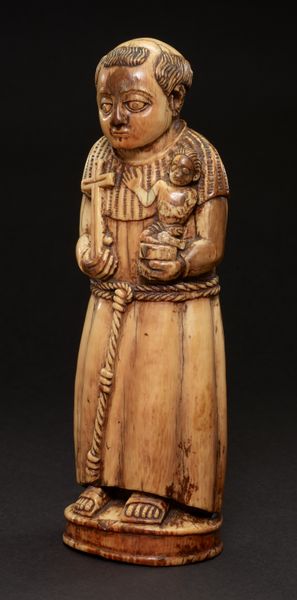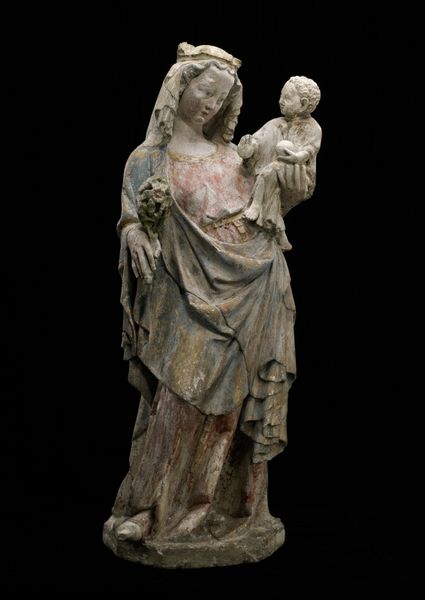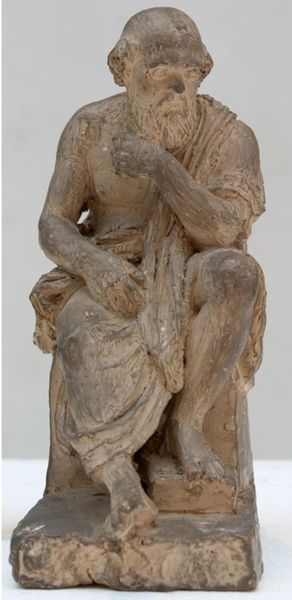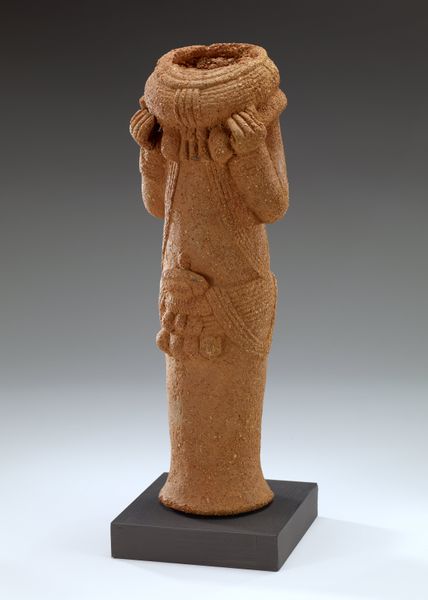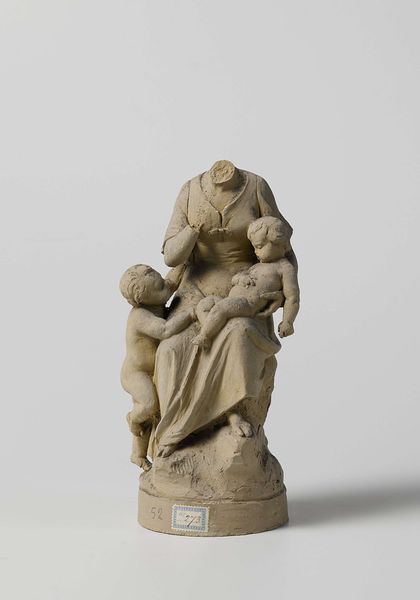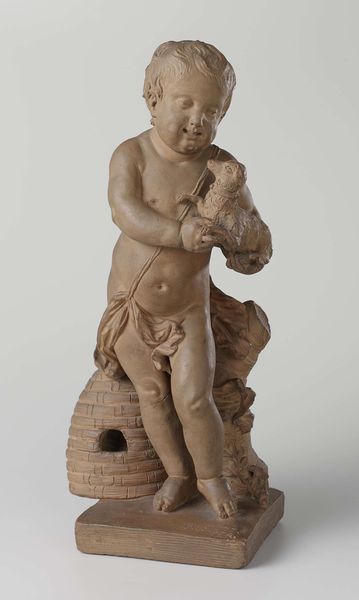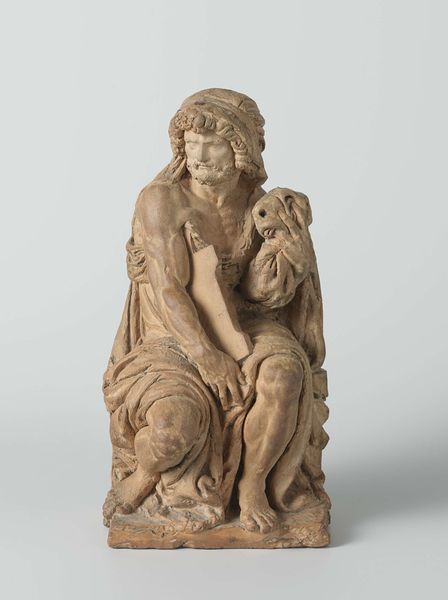
Lille pige med et barn. Gående pige, der støtter et lille gående barn 1858
0:00
0:00
sculpture, terracotta
#
portrait
#
sculpture
#
figuration
#
sculpture
#
genre-painting
#
terracotta
#
charcoal
Dimensions: 17.5 cm (height) x 6.7 cm (width) x 7.7 cm (depth) (Netto)
Editor: So, this is O. Evens' "Little Girl with a Child. Walking Girl Supporting a Little Walking Child," made in 1858 using terracotta. It's a touching scene. I am immediately struck by the tenderness but also, almost strangely, by the fragility, partially owing to the missing arms, no? What initially captures your attention in this piece? Curator: It feels like stepping into a memory, doesn't it? This fleeting moment captured in terracotta, the soft curves and the weight of implied movement... I get lost thinking about Evens’ hands shaping this piece, the subtle pressure needed to coax the clay into these forms. And, yes, the absent limbs. What are your thoughts on that specific absence, that particular mark on the whole? Editor: Well, the missing arms certainly enhance that sense of fragility, as though time has eroded more than just the physical form. They invite you to consider what once was, the whole, the initial intent and now this artefact of its creation. Does the genre painting categorization of the statue point to its historical reception as capturing a normal everyday slice of life? Curator: Exactly! That erosion… that imperfection adds a layer of reality to an otherwise idealized domesticity. A slice of life rendered… slightly off, hinting at the tougher realities of parenthood and the precarity of childhood, of being supported as well as the act of giving it. What might a modern eye, used to thinking critically about social relationships, think of a sculpture like this? Editor: That's interesting. Well, in comparison to then, the art historical conversation has come so far from celebrating unadulterated naturalism. So for us today, there's probably more room for interpretation that's based less on representing daily life and more on the complex feelings evoked, or the creative intention that it gestures towards. Curator: Yes. I love how it's that space for interpretation, born from physical and cultural distance, that gives us so much creative license. What new lenses, different perspectives, allow to see this now. Editor: Thanks, I think I have a slightly better understanding of this terracotta sculpture. Curator: As do I. What new work can tell and what time changes our perceptions, is a continual marvel.
Comments
No comments
Be the first to comment and join the conversation on the ultimate creative platform.

